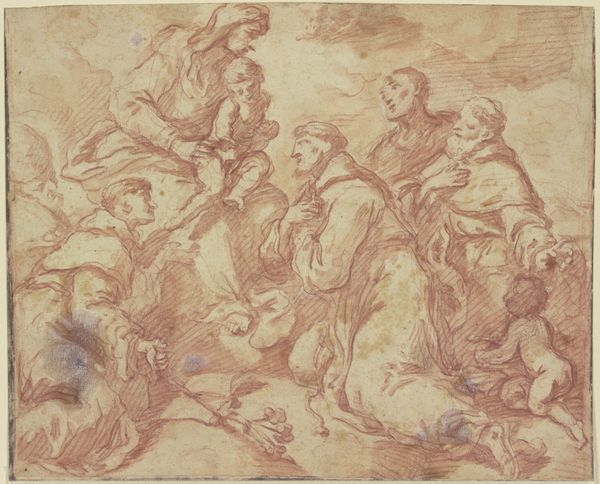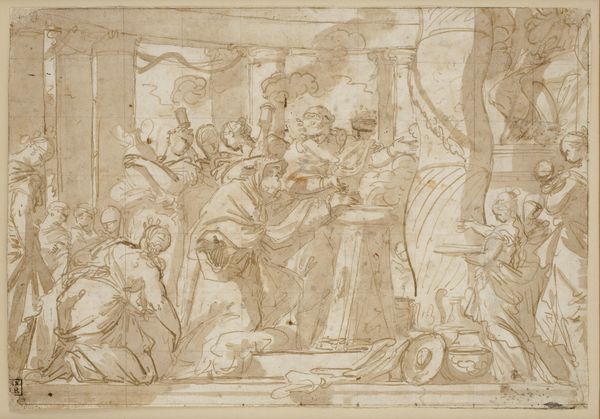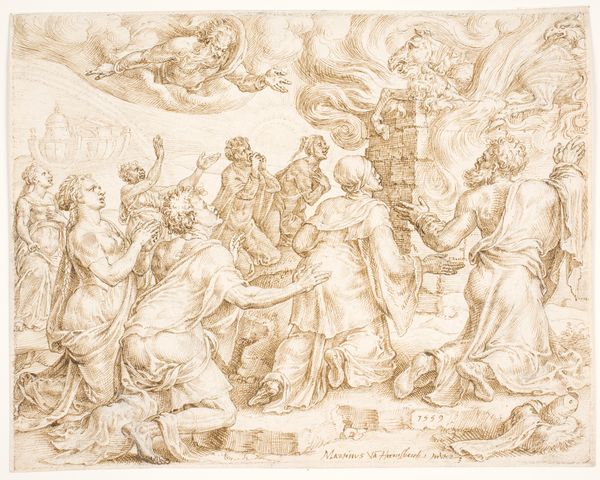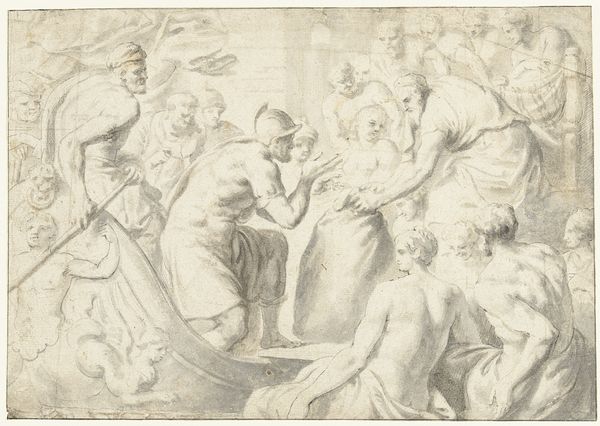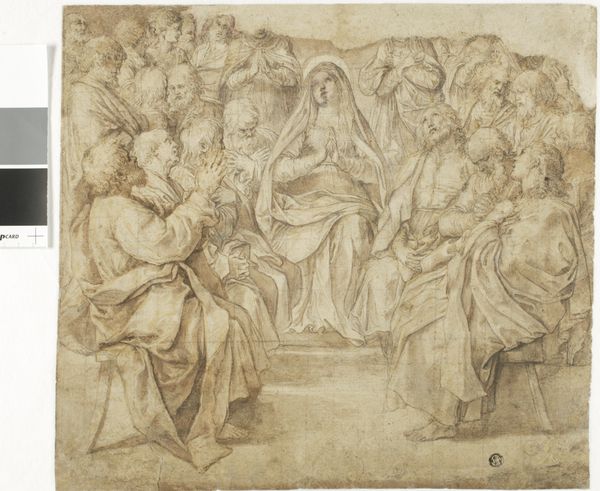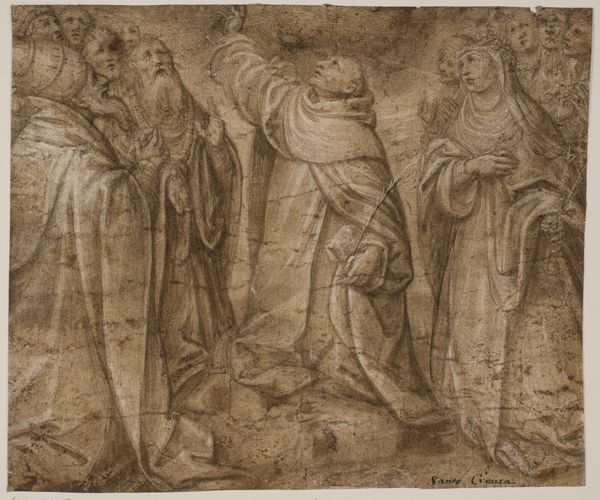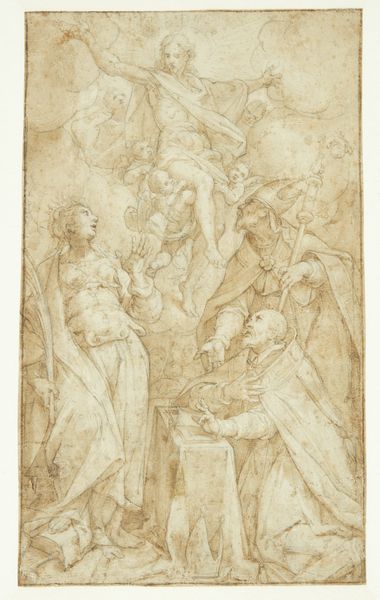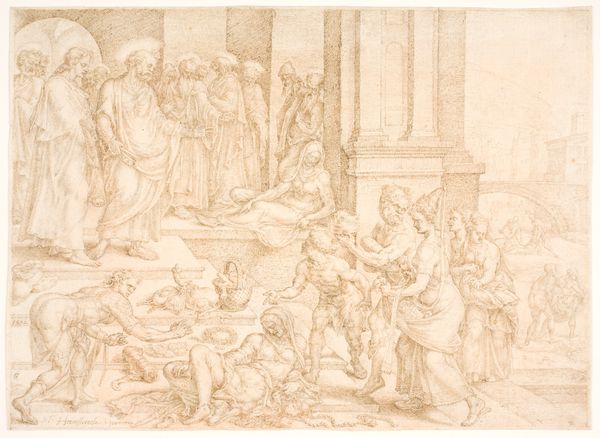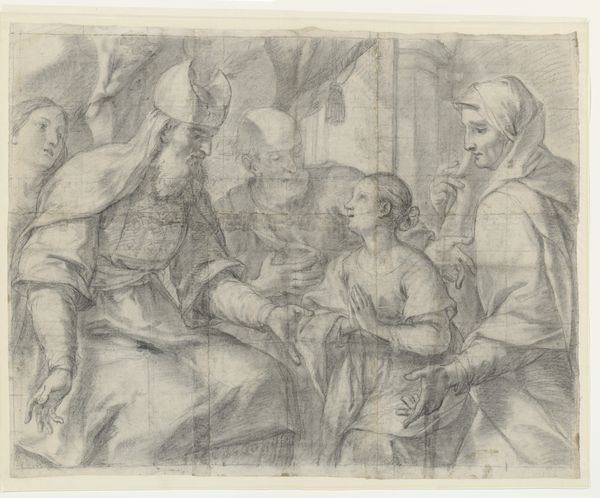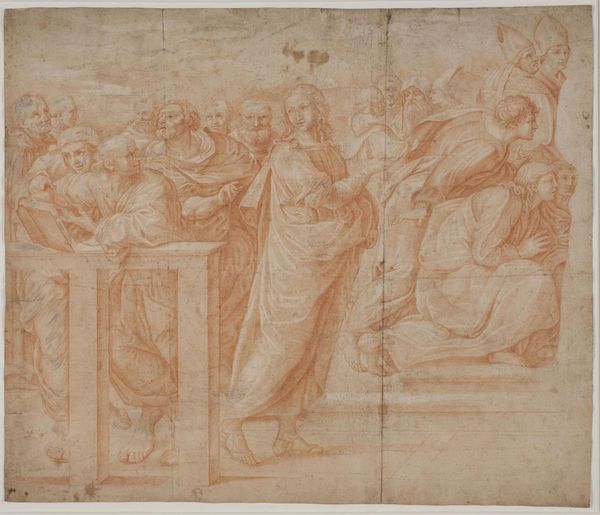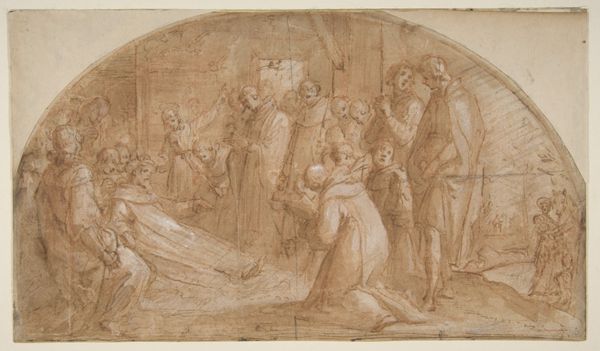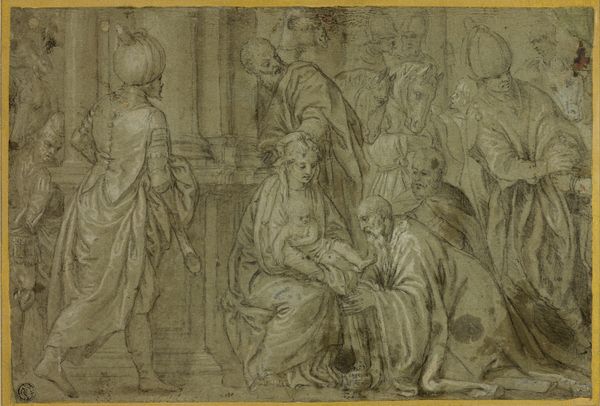
Peter Denying Christ, engraver's copy after a painting by Lorenzo Pasinelli 1600 - 1700
0:00
0:00
drawing, print, engraving
#
portrait
#
drawing
#
baroque
#
ink painting
# print
#
figuration
#
soldier
#
men
#
history-painting
#
engraving
#
christ
Dimensions: 10-11/16 x 13-15/16 in. (27.2 x 35.4 cm)
Copyright: Public Domain
Curator: Looking at this engraving entitled "Peter Denying Christ," an engraver’s copy of a painting by Lorenzo Pasinelli dating from the 17th century, what strikes you first? Editor: The overwhelming feeling of unease and guilt that practically radiates from the central figure, Peter, is my first observation. The tight composition seems to suffocate him with the accusation in the woman's gesture and the implicit threat of the soldiers looming behind him. Curator: The drama here is intense, typical of the Baroque era, a period when the Catholic Church promoted art meant to inspire awe and, yes, a certain level of contrition. Pasinelli, as well as the engraver, excelled in portraying that inner turmoil, that moment of profound personal failing. Editor: Absolutely. Think about Peter's position as a close confidant of Christ. This denial becomes all the more tragic when viewing it as a profound betrayal within a tightly-knit community. The social repercussions are huge, it disrupts established hierarchies and loyalties. The engraver has captured that anxiety in Peter's wide eyes and the almost frantic gesture of his hands. Curator: The engraving, as a print, also has a unique social function. It makes the image and the underlying narrative accessible to a wider audience. People who might never see the original painting could still contemplate the themes of faith, doubt, and repentance in their own homes. And consider how political upheaval often shaped the patronage of the arts. These images functioned in a time when powerful European monarchies controlled institutions. Editor: You are spot on. These readily available engravings played a crucial role in disseminating the image of established power structures. And yet, paradoxically, within the narratives themselves, as we can see with this particular piece, we discover nuanced portraits of inner conflict and the human cost of ideological disputes. To that end, let us look deeper into the historical backdrop surrounding the original creation of this engraving... Curator: That’s an important thread to explore. I find myself reflecting on the accessibility this engraving provided versus the more individualized, commissioned portraits, say, of the Medici or some royal court at that time... Editor: Ultimately, whether one approaches this piece through a lens of religious doctrine, social critique, or art historical documentation, "Peter Denying Christ" presents an undeniable human narrative that resonates powerfully, regardless of the format it takes.
Comments
No comments
Be the first to comment and join the conversation on the ultimate creative platform.
